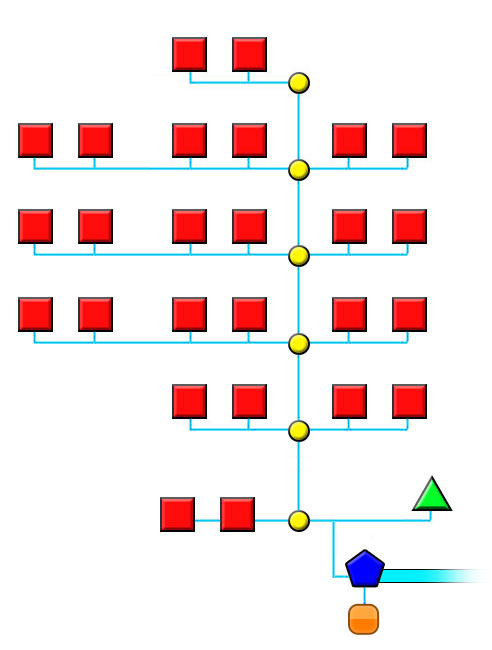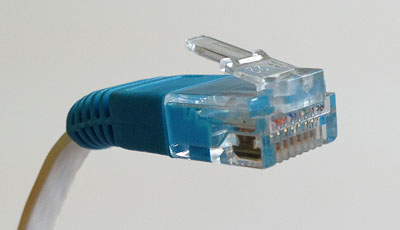A network is when two or more computers (and network peripherals) are linked together so they can share data.
Types of Networks
When a network is inside a single room or building, it is called a LAN (Local Area Network). When a network is between two or more separate buildings, it is called a WAN (Wide Area Network. The Internet is a WAN, the biggest WAN in the world.
There are specific types of networks. A HAN, for example, is a Home Area Network, where several devices are connected within a single home. This is a type of LAN. You might also hear about CANs (Campus Area Networks), MANs (Metropolitan Area Networks), or PANs (Personal Area Networks).
The LAN
LANs, as stated above, exist within a single building or room. Below is a "map" of what a local network might look like:


In this map, the red squares are computers. They are connected using cables, shown as thin light blue lines. Each computer has a LAN port, a socket in the back of the computer that allows a network cable to be plugged in.
To connect computers in such a LAN, we use a cable called the Ethernet cable (also called a LAN cable or network cable). It is usually light blue (though it can be any color), and the connector looks like a land-line telephone connector, except bigger.

In order to connect all computers together, we use an Ethernet hub or a switch, shown on the map as yellow circles .
An Ethernet hub or switch has many Ethernet cable ports. If you plug several computers into a hub, they can "see" and "talk" to each other. A hub and a switch do the same basic job, but switches are slightly better at sending the data.
In the case of our lab, each row of computers has a switch; one cable from each switch goes to the next switch, until we reach the back of the room. This way, all the computers are connected.
Notice that the green triangles are printers. Many peripherals have the ability to join a LAN. Another peripheral to the LAN is the orange rounded-rectangle at the bottom right; that is a file server, basically a hard disk drive connected to the network.
Finally, the blue pentagon near the bottom right is the network server.
Servers
Just above, I mentioned two kinds of servers. A server is actually not a computer, or even a device. A "server" is software. Server software does exactly what the name suggests: it serves data. When you ask for data on a network, a server gives it to you. We often refer to the computers running server software as "servers," but the real server is a software function.
There are several kinds of servers. The server most people think about is a LAN server (sometimes called a "network server," or just the "server"). A LAN server is a computer which manages a LAN. It controls the network, assigning addresses and managing data traffic between computers. It also manages the connection between the LAN and the Internet (the thick, light blue line extending to the right of the server).
Another kind of server you will find on a LAN is a file server. This is a hard drive, or part of a hard drive, which can be accessed by computers in the network. It is kind of a "meeting place," a shared storage device for everyone. In our lab, you will find the file server through the icon named "Public" (or "shortcut to public").
There are other servers, but they are typically not on a LAN. When you connect to the Internet, you will encounter more servers. Whenever you type a web site address into a browser, you are communicating with a web server, which then serves to you the web page. When you send email, you are using an SMTP mail server; when you receive email, you are accessing a POP mail server. There are also database servers and other types of servers as well.